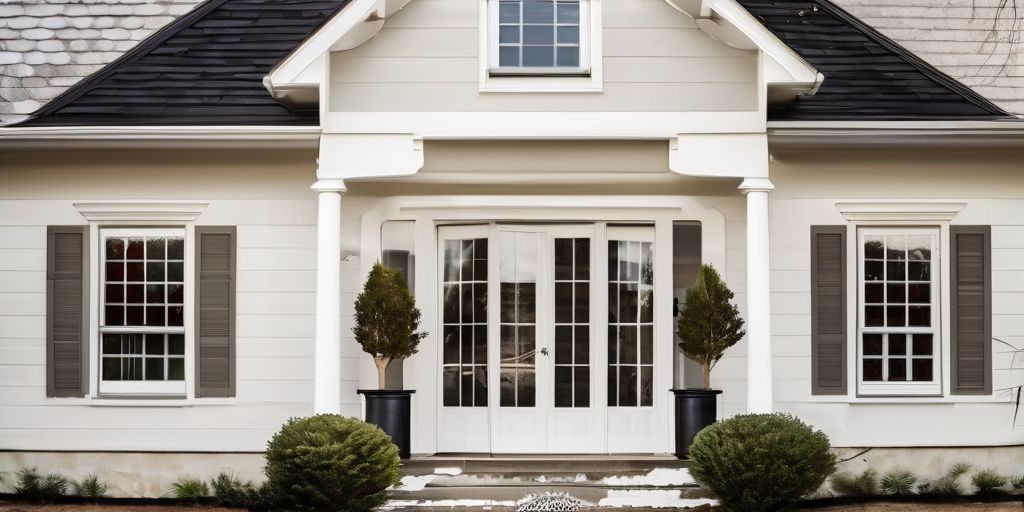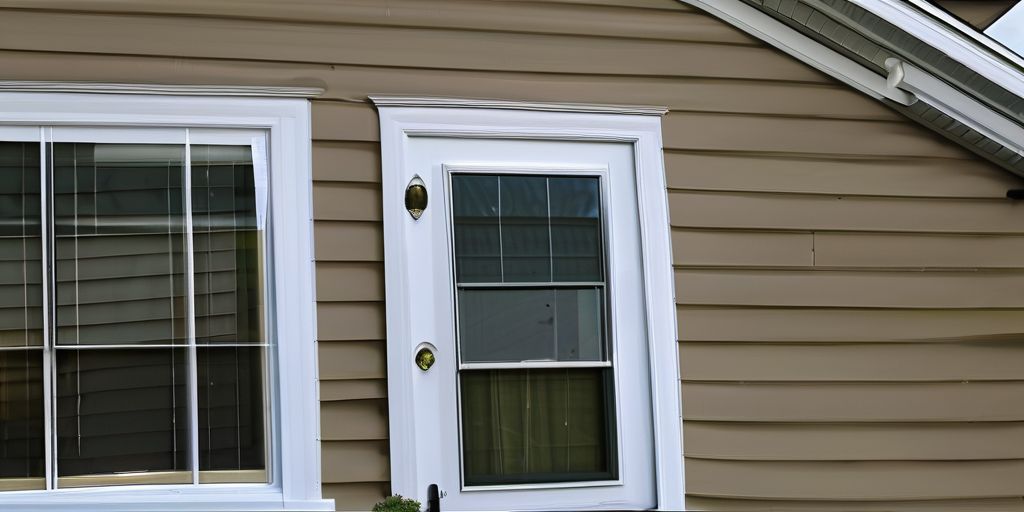Correcting scratches on vinyl siding before painting is crucial to ensure a smooth and long-lasting finish. In this article, we will discuss the necessary steps to prepare the vinyl siding, choose the right paint, apply surface preparation techniques, refurbish exterior features, and finalize the process before painting. By following these guidelines, you can achieve a flawless and durable result for your home’s exterior.
Key Takeaways
- Properly repairing scratches on vinyl siding is essential for paint adhesion and a smooth finish.
- Using the right tools and materials, including safety gear, ensures effective and safe scratch repair.
- Following a step-by-step guide helps in cleaning, sanding, and applying repair compounds correctly.
- Preparing the vinyl siding surface with primer and selecting the appropriate paint is crucial for durability.
- Regular maintenance, including cleaning and inspecting for new scratches, helps in preserving the painted vinyl siding.
Understanding the Importance of Scratch Repair
Before painting your vinyl siding, it’s crucial to address any scratches or blemishes. Proper scratch repair ensures a smooth and long-lasting paint job, enhancing the overall appearance of your home. Let’s delve into why this step is so important and how it benefits you in the long run.
Essential Tools and Materials for Scratch Repair
Before you start repairing scratches on your vinyl siding, it’s important to gather all the necessary tools and materials. This ensures a smooth and efficient repair process.
Must-Have Tools for the Job
To effectively repair scratches on vinyl siding, you’ll need the following tools:
- Fine-grit sandpaper
- Putty knife
- Soft cloths
- Bucket for soapy water
- Sponge
- Utility knife
Choosing the Right Repair Compounds
Selecting the appropriate repair compounds is crucial for a seamless finish. Here are some options:
- Vinyl siding repair compound
- Exterior caulk
- Filler putty
Ensure the compounds are compatible with vinyl siding to avoid any adverse reactions.
Safety Gear and Precautions
Safety should always be a priority. Equip yourself with the following gear:
- Safety goggles
- Gloves
- Dust mask
Taking these precautions will help you avoid injuries and ensure a safe working environment.
Taking the time to fix scratches and blemishes can significantly enhance the final appearance of your painted vinyl siding.
By following these guidelines, you can effectively repair scratches and prepare your siding for a fresh coat of paint, ensuring a beautiful and long-lasting result.
Step-by-Step Guide to Fixing Scratches
Cleaning and Preparing the Surface
To start, clean the area thoroughly with soapy water to remove any dirt or debris. This ensures that no particles interfere with the repair process. Taking the time to clean properly can significantly enhance the final appearance of your painted vinyl siding.
Sanding Techniques for Vinyl Siding
Gently sand the scratch with fine-grit sandpaper, moving in the direction of the grain to avoid further damage. This step is crucial for creating a smooth surface for the repair compound to adhere to.
Applying Repair Compounds Effectively
Apply a thin layer of vinyl siding repair compound to the scratch. Make sure to follow the manufacturer’s instructions for the best results. Allow the compound to dry completely before proceeding with painting.
By following these simple steps, you can easily repair minor imperfections and prepare your siding for a fresh coat of paint, ensuring a beautiful and long-lasting result.
Preparing Your Vinyl Siding for Painting
Proper preparation is essential for painting vinyl siding. Steps include cleaning, repairing, and priming. Attention to detail and quality tools lead to professional results.
Priming the Surface
Before you start painting, it’s crucial to prime the surface of your vinyl siding. This step ensures better paint adhesion and longevity. Use a high-quality primer specifically designed for vinyl surfaces. Proper preparation is key to achieving a smooth and durable finish.
Selecting the Best Paint for Vinyl Siding
Choosing the right paint is vital for a successful project. Opt for paint that is formulated for vinyl siding. These paints are flexible and can withstand the expansion and contraction of vinyl. Look for weather-resistant options to safeguard your vinyl siding paint from Hamilton’s winter conditions.
Weather Considerations for Painting
Weather plays a significant role in the painting process. Avoid painting on extremely hot or cold days. The ideal temperature range for painting vinyl siding is between 50°F and 85°F. Also, ensure that there is no rain in the forecast for at least 24 hours after painting. This will help the paint to cure properly and provide a long-lasting finish.
Taking the time to fix scratches and blemishes can significantly enhance the final appearance of your painted vinyl siding.
By following these simple steps, you can easily repair minor imperfections and prepare your siding for a fresh coat of paint, ensuring a beautiful and long-lasting result.
Maintaining Your Painted Vinyl Siding
Maintaining your painted vinyl siding is crucial for preserving its appearance and longevity. A little maintenance goes a long way in extending your siding’s life span. Proper care of vinyl siding includes cleaning it once or twice a year and inspecting it regularly for any damage.
Common Mistakes to Avoid
When painting vinyl siding, avoiding common mistakes is crucial for a professional and lasting finish. Here are some tips to ensure a flawless project:
Skipping Surface Preparation
One of the most critical steps in painting vinyl siding is proper surface preparation. Neglecting this step can lead to poor paint adhesion and a less durable finish. Make sure to clean the surface thoroughly and repair any scratches or damages before you start painting.
Using Inappropriate Tools or Materials
Choosing the right tools and materials is essential for a successful paint job. Using the wrong type of paint or tools can result in a subpar finish. Opt for high-quality brushes, rollers, and paints specifically designed for vinyl siding.
Ignoring Weather Conditions
Weather plays a significant role in the success of your painting project. Painting in unsuitable weather conditions, such as extreme temperatures or high humidity, can affect the paint’s ability to adhere and cure properly. Always check the weather forecast and plan your project accordingly.
Remember, taking the time to prepare the surface meticulously will pay off in the long run with a polished and enduring finish.
By avoiding these common mistakes, you can ensure a successful and long-lasting paint job for your vinyl siding.
When it comes to exterior painting, avoiding common mistakes can save you time and money. From improper surface preparation to choosing the wrong type of paint, these errors can lead to unsatisfactory results. For expert advice and professional services, visit our website. Our team specializes in a variety of exterior painting projects, ensuring a flawless finish every time.
Conclusion
In conclusion, taking the time to properly correct scratches and prepare your vinyl siding before painting is essential for achieving a flawless and long-lasting finish. By following the steps outlined in this guide, you can ensure that your siding is in the best possible condition for painting. Remember, attention to detail and proper preparation are key to enhancing the beauty and durability of your home’s exterior. Whether you’re dealing with minor scratches or more significant blemishes, the techniques and tips provided will help you tackle your project with confidence. Happy painting!
Frequently Asked Questions
Why is it important to fix scratches before painting vinyl siding?
Fixing scratches before painting vinyl siding is crucial for ensuring a smooth and long-lasting finish. Unrepaired scratches can cause paint to adhere poorly and may lead to peeling or bubbling over time.
What tools do I need to repair scratches on vinyl siding?
Essential tools for repairing scratches on vinyl siding include fine-grit sandpaper, a vinyl siding repair kit, a putty knife, and soapy water for cleaning the area.
Can I use any type of paint on vinyl siding?
No, it’s important to use paint specifically designed for vinyl siding to ensure proper adhesion and durability. Look for exterior acrylic paint that is formulated for use on vinyl surfaces.
How do I prepare the surface of vinyl siding before painting?
Start by cleaning the area thoroughly with soapy water to remove dirt and debris. Sand the scratched area gently with fine-grit sandpaper, apply a vinyl siding repair compound, and allow it to dry completely before painting.
What are common mistakes to avoid when fixing scratches on vinyl siding?
Common mistakes include skipping surface preparation, using inappropriate tools or materials, and ignoring weather conditions. Proper preparation and using the right materials are key to a successful repair.
How can I maintain my painted vinyl siding?
To maintain painted vinyl siding, perform routine cleaning, inspect for new scratches regularly, and use touch-up techniques for minor damage. This helps in preserving the appearance and longevity of the paint job.




